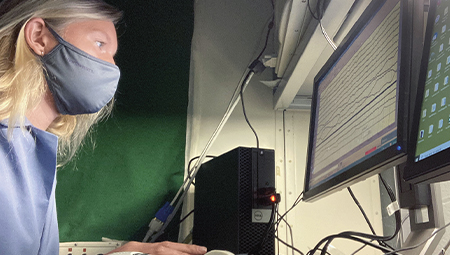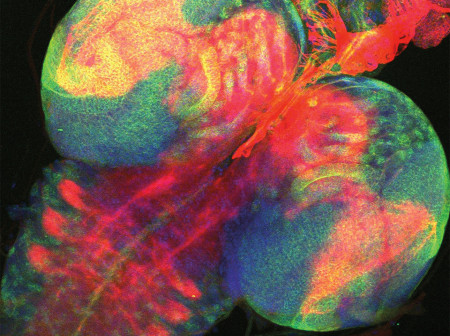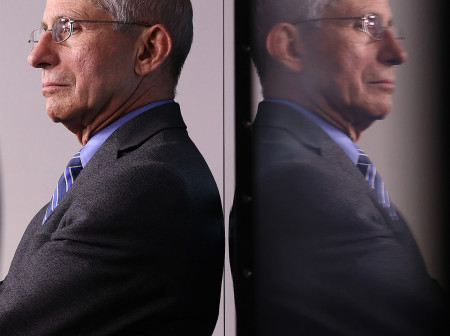Dreams take us to an alternate reality. They also happen while we’re fast asleep. And a new study led by Northwestern researchers shows that a person in the midst of a vivid dream can perceive incoming questions and provide answers to them.
The researchers studied people attempting to have lucid dreams — dreams in which people are aware they’re dreaming. The team based its experiment on two known premises: first, that lucid dreamers can signal to an observer by moving their eyes; and second, that sensory stimuli (such as flashing lights or gentle beeping sounds) can be presented to dreamers in a way that would register and alter their memory processing but not wake them.
Study participants were trained in techniques to improve their likelihood of having a lucid dream. They were then instructed to signal to researchers when they experienced such a dream, usually with a sequence of eye movements to the left and right.

Psychology doctoral student Karen Konkoly watches brain signals from a sleep study participant in the lab.
The researchers used brain wave data to confirm that study participants had reached the REM (rapid eye movement) stage of sleep, a phase in which lucid dreaming can occur.
The investigators found that it was possible for people, while dreaming, to follow instructions, do simple math, answer yes-or-no questions and differentiate between sensory stimuli. They could respond using eye movements or by twitching facial muscles. The researchers refer to these successful conversations as “interactive dreaming.”
“We found that individuals in REM sleep can interact with an experimenter and engage in real-time communication,” says senior author Ken Paller, professor of psychology and director of the Cognitive Neuroscience Program in the Weinberg College of Arts and Sciences. “We also showed that dreamers are capable of comprehending questions, engaging in working memory operations and producing answers.
“Most people might predict that this would not be possible — that people would either wake up when asked a question or fail to answer, and certainly not comprehend a question without misconstruing it.”
While dreams are a common experience, scientists still haven’t adequately explained them. Relying on a person’s recounting of dreams is also fraught with distortions and forgotten details. So Paller and colleagues decided to attempt communication with people during lucid dreams.
“Our experimental goal is akin to finding a way to talk with an astronaut who is on another world, but in this case, the world is entirely fabricated on the basis of memories stored in the brain,” the researchers wrote in the journal Current Biology.
Future studies of dreaming could use these same methods to assess cognitive abilities during dreams compared with wakefulness, according to psychology doctoral student Karen Konkoly ’21 MS, the study’s first author. These methods also could help verify the accuracy of dreamers’ post-awakening reports. Outside of the laboratory, the methods could be used to help people solve problems during sleep or offer nightmare sufferers novel ways to cope.




Reader Responses
Jasu Hu! A beautiful image.
—Mark Milliken San Rafael, CA
No one has commented on this page yet.
Submit a Response